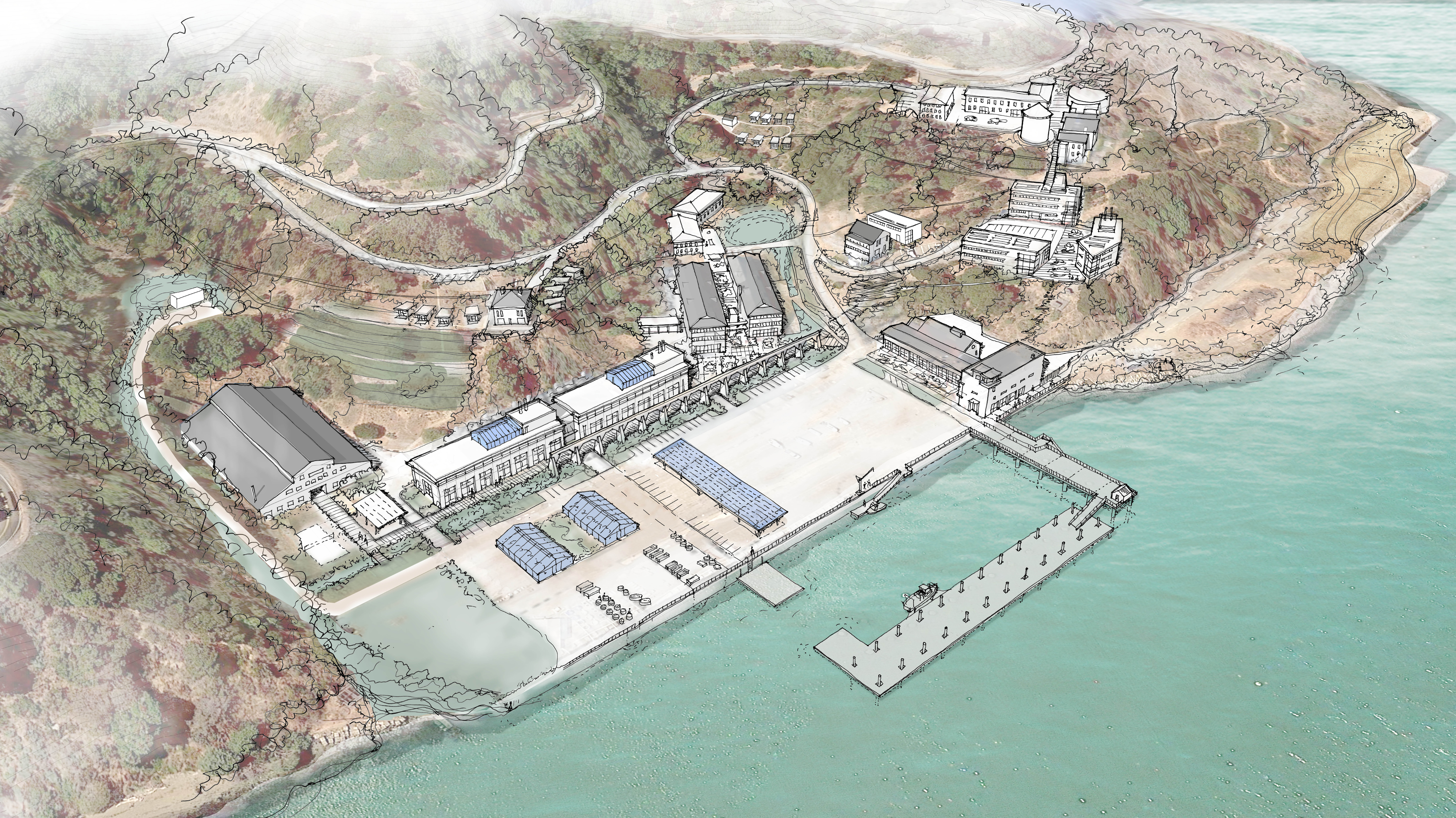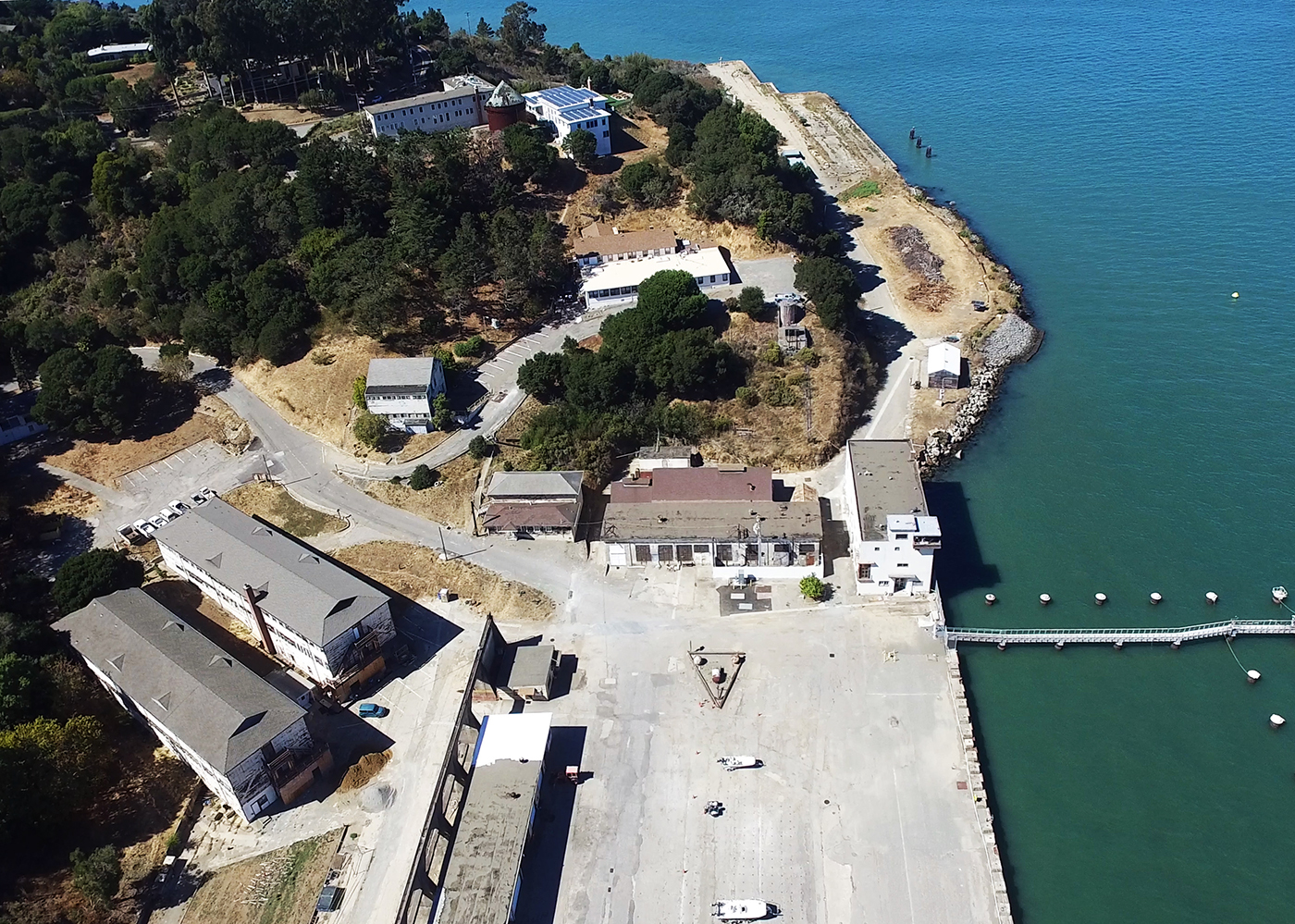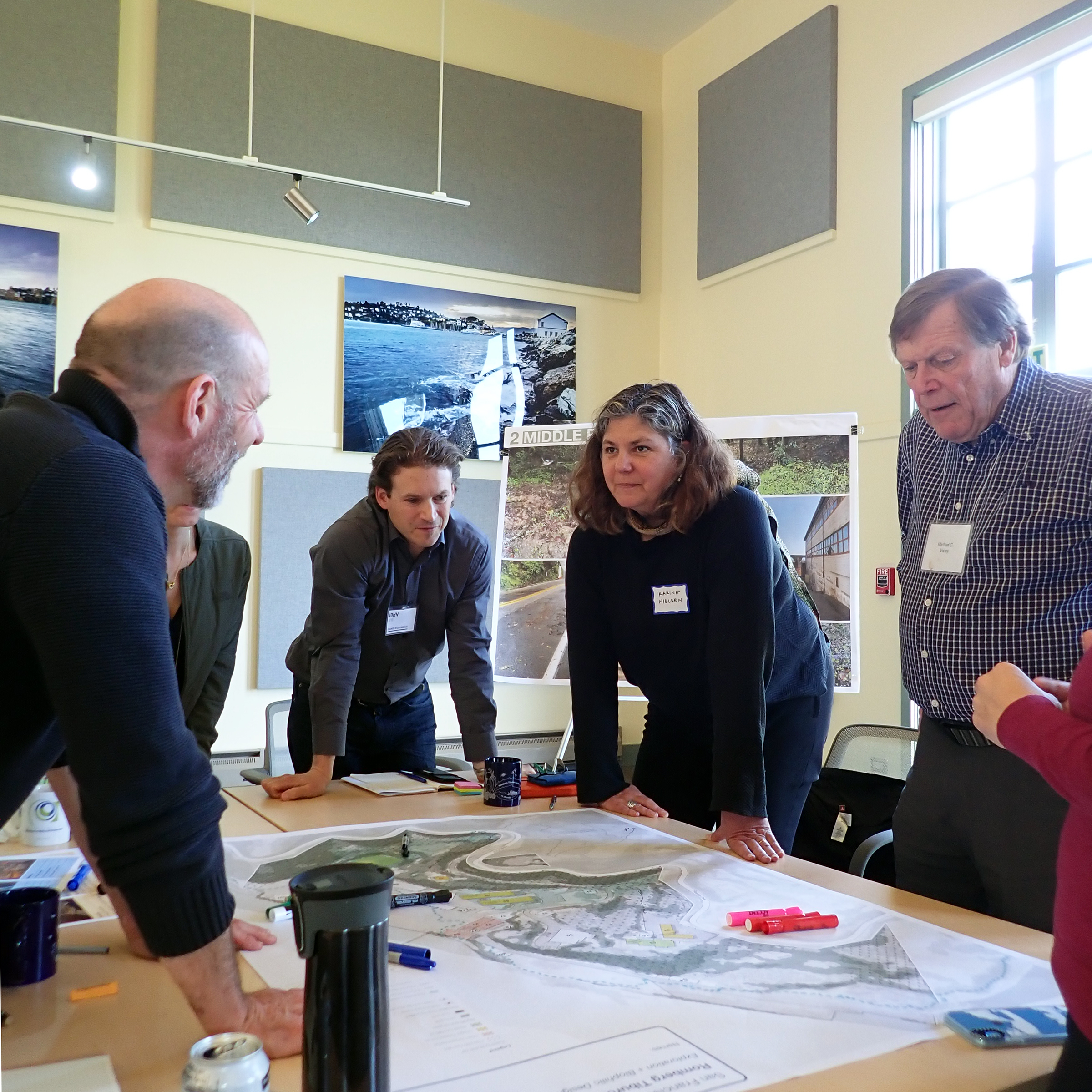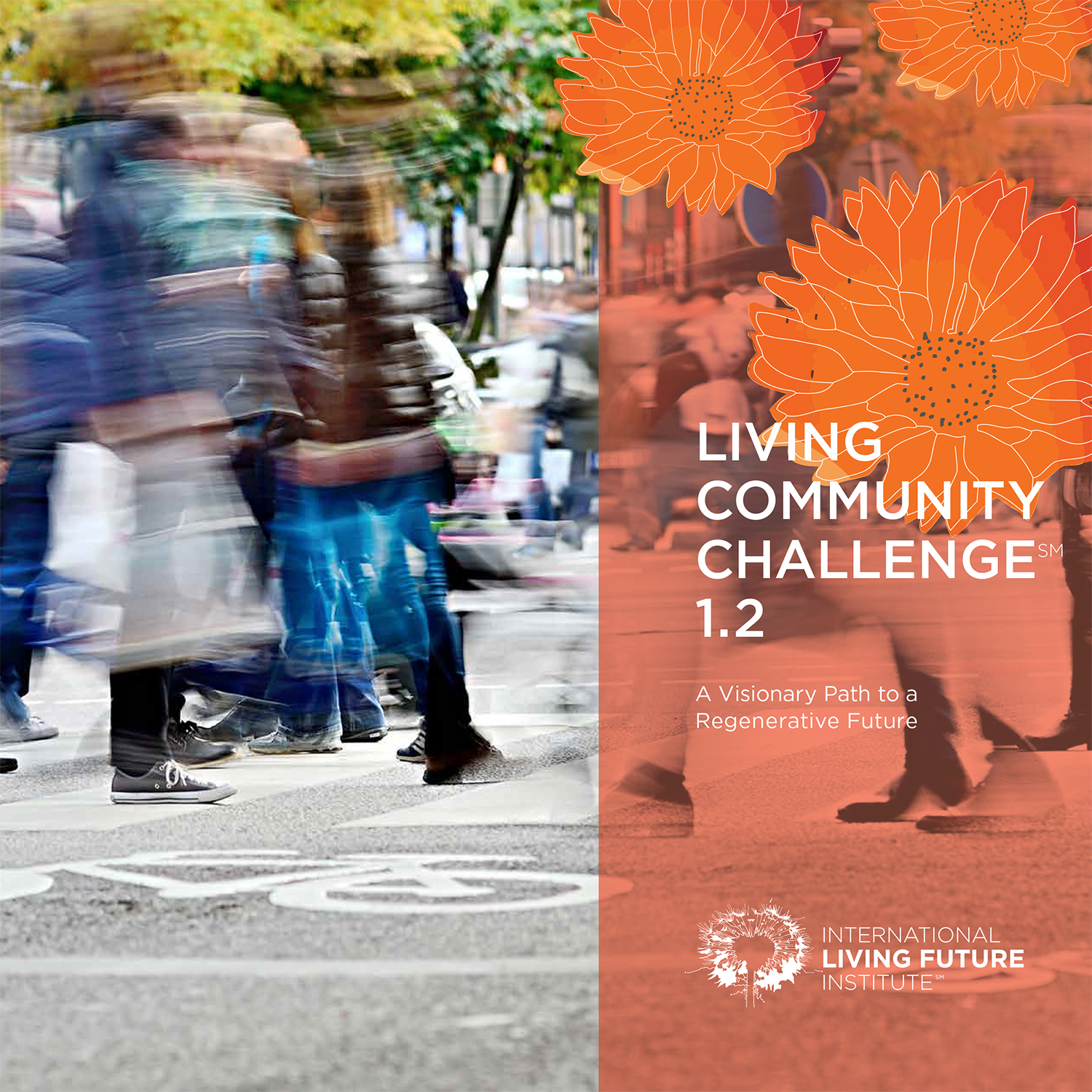Did you know that SF State has a research campus in Tiburon? Planning + Design is leading a planning effort to revitalize this special place and make it accessible to our campus community and Tiburon neighbors. Located on San Francisco Bay near the Pacific Ocean, the campus is a scientific and educational bridge to the extraordinary physical, biological, and cultural diversity of nearby marine and coastal ecosystems. The campus has a rich history of marine research, education, and discovery dating back nearly 40 years. It is home to the Estuary & Ocean Science Center, a research and service organization of the University, with an established academic reputation for excellence in marine and estuarine sciences.

Following the Synthesis Charrette, the design team revised the preferred scheme in response to comments. Click below to see the most recent draft plan.
The preferred scheme is guided by Vision Statements and Guiding Principles. This document was developed during engagement sessions with the master plan advisory groups and refined during a comment period.

Location. The 53-acre Tiburon campus is set within a compelling landscape and bay shore replete with cultural and environmental history. The physical plant has aging buildings and infrastructure with historical value, as documented in a recently completed historic resource evaluation. In addition, the campus has nearly half a mile of armored shoreline (seawalls, riprap, and rubble) that negatively impacts natural coastal habitats, ecological processes, sediment transport, and biodiversity.
Planning Context. The Romberg Tiburon Campus (formerly Romberg Tiburon Center) has never had a master plan formally prepared and adopted by the campus or the CSU Board of Trustees. An approved master plan and certified Environmental Impact Report (EIR) are required before the university can take on significant demolition and new construction projects on this site.

Focus and Process. The planning approach engages and includes students, faculty, staff, and affiliates, as well as the greater community. Its purpose is to build the social, political, economic, and policy support for the plan. Finally, the plan must lay a strong foundation for implementation by informing land use; establishing infrastructure needs; defining projects and phasing; establishing design characteristics; and attracting potential development partners.
Design in Public. The main planning activities are being carried out on the Romberg Tiburon Campus in an interactive charrette format.
Engagement Strategy. Throughout the development of the master plan, the consultant team is holding a series of meetings and work sessions with members of the internal campus community as well as the broader Tiburon community. The meetings involve a combination of presentations of the various elements of the plan as it evolves, as well as hands-on charrettes to work through design issues, ideas, and concepts, with the goal of producing a holistic and representative shared vision for the campus’s future.

Sustainability Approach. The campus is seeking certification of this plan under the Living Community Challenge program, which will guide the format of the planning process. The Living Community Challenge is a tool to help create a campus community that is vibrant, connected, and regenerative. San Francisco State University is the second CSU campus to register a master plan with LCC (the other is CSU Monterey Bay).
Design Team
planner: Page/
architect: Leddy Maytum Stacy Architects
landscape architect: GGN
marine architect: Dangermond Keane
civil and water resource engineer: Sherwood Design Engineers
living community challenge and sustainability: Atelier Ten
mobility: Nelson\Nygaard
ecologist: WRA, Inc.
climate adaptation and restoration: Karina Nielsen Ph.D., Chela Zabin Ph.D., and Environmental Science Associates1
1 We gratefully acknowledge support from the State Coastal Conservancy